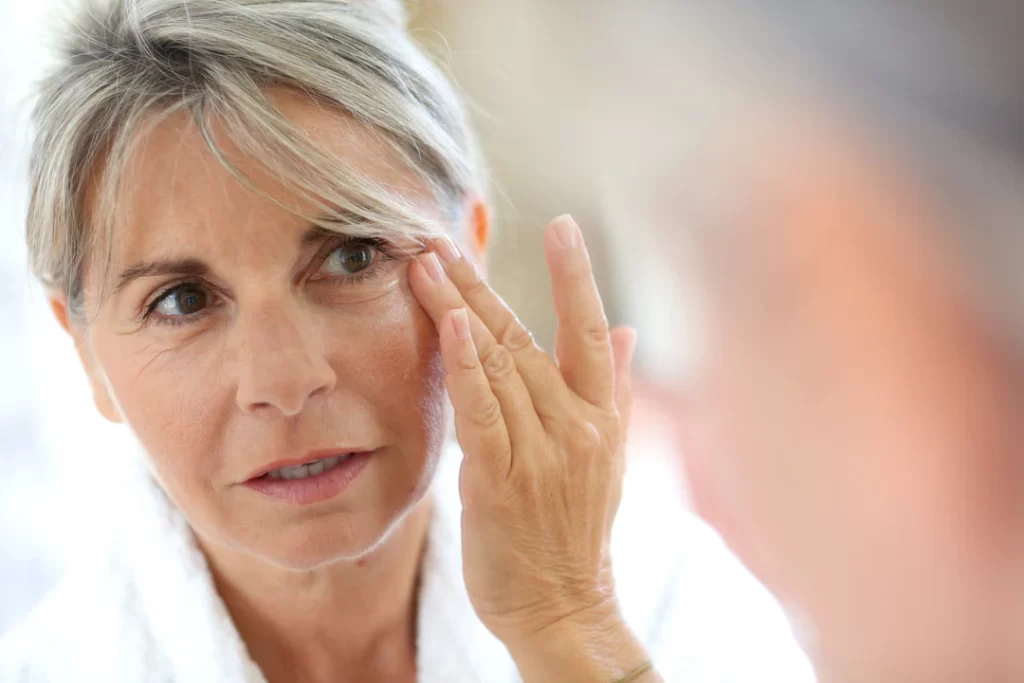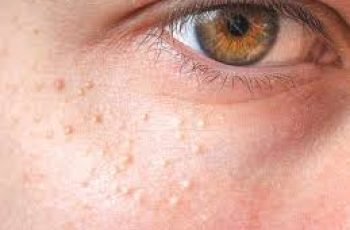
Can I use Salicylic Acid with Hyaluronic Acid and Niacinamide?
If you’re new to using skincare the thought of applying all three of these popular skin ingredients may feel very daunting. Does using three different powerhouse ingredients really have that much of an impact on the skin? Can you even use salicylic acid with hyaluronic acid and niacinamide? Well, that is exactly what we’ll be investigating today so stick around to find out more.
Can I use hyaluronic acid with salicylic acid?
Absolutely, hyaluronic acid and salicylic acid are perfectly safe to use together. This is because, although they are both carry the name acid, they do in fact work very differently on the skin.
Hyaluronic acid is a highly effective skin ingredient because of the humectant properties it contains. The significance of these humectant traits is how it can lock in moisture into the skin barrier. When the skin barrier contains the correct levels of water and oil it will not only give your complexion an all-over healthier appearance but will allow the skin barrier to protect itself from exposure to daily free radicals, such as pollution, UV rays and other environmental aggressors. The boost of hydration also results in any other ingredients that are very potent, such as salicylic acid, will not cause any skin irritation that is sometimes a common side effect.
As for using salicylic acid with hyaluronic acid and niacinamide the best way of applying the all effectively is starting with a exfoliating toner containing salicylic acid, followed with hyaluronic acid to hydrate and prevent skin irritation, then finally niacinamide to regulate the production of sebum of the skin.
Should I use niacinamide or salicylic acid first?
It is considered best to apply niacinamide to the skin before following this with salicylic acid. This is because niacinamide will work on the surface of the skin by drawing water in from the surrounding area and locking it into place. With a moisturised skin barrier, you will be able to counteract any dryness or skin irritation that often occurs when using salicylic acid. The popular BHA is highly potent and is praised for its ability to combat blemishes and acne, but can cause problems, such as dryness, mild irritation and if overused can strip the skin of vital oil it needs to remain healthy.
The natural oil found in the skin, also known as sebum, is usually the first thing to suffer from imbalance when we incorrectly use potent skin ingredients such as salicylic acid. Once the surface barrier experiences any oil lacking it automatically kicks start the sebum production. This results in vicious cycle of an overly oily complexion with frequent breakouts that will continue if you’re overusing formulas with high levels of salicylic acid. However, it’s not a case of doom and gloom, this is exactly why niacinamide is considered the best teammate for salicylic acid due to the fact it is able to regulate sebum production thereby keeping the harmony and balance on the skin surface.
Can you put niacinamide on top of salicylic acid?
Yes, you can, as long as the formulas allow you to apply your skincare products in this order. It is considered to gain the optimal results with your routine you must apply your products from the thinnest consistency to the thickest.
When applying niacinamide on top of salicylic acid, it is best to use a light-weight serum or exfoliating toner followed by a thicker gel-like serum enriched in niacinamide. You’ll find that the salicylic acid is able to rid the surface of the skin of any dead skin cells build-up as well as bacteria, dirt, and impurities that if left will work their way into the lower layers of the skin and clog the pores. Followed with niacinamide will result in the skin barrier gaining a boost of hydration.
Which is better salicylic acid or hyaluronic acid?
Both ingredients provide an array of skin benefits, both of which are unique. With hyaluronic acid being suitable for all skin types anyone can introduce it easily into their daily routine. As for salicylic acid, this potent powerhouse is considered too harsh for those with a dry and sensitive skin type should avoid using the BHA altogether.
Here is a little more information you can expect to see when using these ingredients.
Skin benefits of Salicylic Acid
Can slough away the layer of dead skin cells on the surface of the skin.
Is oil-soluble meaning it is able reach the bottom layers of the skin and unclog pores.
Revives a lack lustre complexion leaving a glowing finish
Reduce the appearance of acne, breakouts, and spots
Restores skin health and balance
Skincare benefits of Hyaluronic Acid
Contains humectant properties ensuring the skin remains continuously hydrated.
Makes the skin soft, supple with a youthful bounce
Reduces the signs of fine lines and wrinkles
Combats signs of discolouration and hyperpigmentation Enhances the lipid barrier of the skin helping it to remain healthy The best part about hyaluronic acid and salicylic acid is that you can use both together at the same time for optimal skin results. If you are wanting to find out more, check out our blog post about how to layer hyaluronic acid and salicylic acid. What should I use after salicylic acid? Any form of hydrating skin ingredients, such as hyaluronic acid or niacinamide. By using these moisturising and nourishing ingredients you are able to counteract any signs of dryness or irritation. For more information about salicylic acid and its skincare benefits, there is a full dedicated blog over on The Beauty Insiders. Do I have to rinse off salicylic acid? Not necessarily, this is very much dependant on the formula the salicylic acid is blended in to. For example, if you are using a cleanser or face wash containing the BHA is rinsed off, compared to a serum or skin treatment as these blends remain on the skin. This is an important factor to remember when using salicylic acid as if you are wanting to introduce it into your routine for the first time. Opting for formulas that rinse off will ensure you gain some skin benefits, without it stripping the skin and causing irritation, dryness, or allergic reaction. There you have a little more information about using all three powerhouse ingredients together. If you have any questions don’t hesitate to come and find me on Procoal’s Instagram.
DQH Can I use salicylic acid first and then vitamin C?
It’s easy to create a skincare routine, but knowing how to use it is another thing entirely. In most cases, if you’re not getting the desired skin results, it could be due to the layering of conflicting ingredients. So, is it possible that salicylic acid and vitamin C are such ingredients? Or are these active ingredients the duo that’s been missing from your skincare routine? If you want answers, stick around because today we are going to explain the benefits of salicylic acid and vitamin C and how they can be used in your daily life.
What are the benefits of salicylic acid for skin?
Salicylic acid is one of the most commonly used beta hydroxy acids and is favored by many people with oily, acne-prone skin. This acid is derived from willow bark, and unlike its water-soluble relatives (called alpha-hydroxy acids), salicylic acid is oil-soluble, which means it can penetrate deeper into the lower layers of the skin. Once it reaches the lower layers, it can help unclog pores of excess sebum, dirt, bacteria, debris, and impurities. This results in clearer skin tones and greater definition.
Not only does salicylic acid benefit the underlying layers, but the outer surface of the skin benefits as well. When applied to the skin, salicylic acid removes the buildup of dead skin cells. This is accomplished by breaking the bonds that hold dead cells to the surface. Over time, this can cause the complexion to look dull and prone to acne, blackheads, and other blemishes.
If you’d like to learn more about salicylic acid and how it can improve your skin, check out this dedicated blog post from a beauty insider.
What are the benefits of vitamin C for skin?
Vitamin C is considered one of the most powerful antioxidants, which means it is very effective at fighting free radicals and preventing them from causing further skin damage. Examples of free radicals include pollution, central heating, UV rays and harsh climate. They attack proteins, fats and cell membranes as soon as they come into contact with the skin, causing signs of premature aging such as fine lines and wrinkles as well as hyperpigmentation, flaky patches of skin and loss of elasticity.
Many people usually prefer to use vitamin C in their morning routine as this ingredient gives the complexion a radiant glow. You’ll also find that vitamin C can target areas of hyperpigmentation, plumping the skin and reducing the appearance of fine lines and wrinkles.
The thing about vitamin C is that there are a lot of outdated studies going back to the 1950s that describe vitamin C as an unstable skin component. Thanks to improvements in modern technology, this is no longer the case as all products now contain a stable form of vitamin C.
Visit The Beauty Insider to learn more about vitamin C. So please check out our blog post.
Can I use salicylic acid first and then vitamin C?
Yes, you absolutely can. In fact, it’s thought that using salicylic acid before using vitamin C ensures it penetrates faster and works faster.
This is an efficient way to utilize two power sources, and the reason has to do with pH. For example, the skin’s natural pH is about 4.7, making it slightly acidic. Salicylic acid and vitamin C are also both acidic, and you’ll find that vitamin C is absorbed quickly into the skin. Therefore, using salicylic acid beforehand can increase the acidity of the skin and allow vitamin C to penetrate into the skin faster.
While this is considered an effective way to combine two powerful ingredients, you need to be aware of your skin type and how it reacts to certain active ingredients. Even people with perfect, normal skin can experience skin sensitivity and irritation. Therefore, always consult a doctor or dermatologist before using any new products on your skin.
It’s also important to follow skin application rules. In this case, you need to use the product correctly to ensure you get the best results for your skin. If you’re not sure what I mean, the basic rule for skin is to start with the thinnest consistency and work your way up to the thickest consistency. This prevents a barrier from forming on the surface, preventing other active ingredients from penetrating the skin.
Can I use salicylic acid at night and vitamin C in the morning?
Yes, absolutely, this is considered the most effective way to get returns without any adverse side effects. This is because there is enough time between applications to ensure that the skin’s pH levels return to balance.
You’ll also find that Vitamin C is rich in antioxidants and is perfect for use in the morning to ensure your skin is protected and looking its healthiest. Due to the small size of salicylic acid molecules, it is an acid that is able to reach the deepest parts of the skin. While this is effective at keeping skin clear, it also increases the risk of irritation and photosensitivity. Therefore, many people prefer to use powerful BHAs in their evening routine without exposure to UV rays, pollution, or harsh weather.
Warning: If you avoid using sunscreen every day, none of these ingredients will do what your skin needs. The combination of chemical peels and powerful ingredients increases the risk of further damage to the skin’s surface. Use SPF 50 every day to keep your skin protected and your lipid barrier healthy, even on cloudy days, keeping your skin in top condition.


